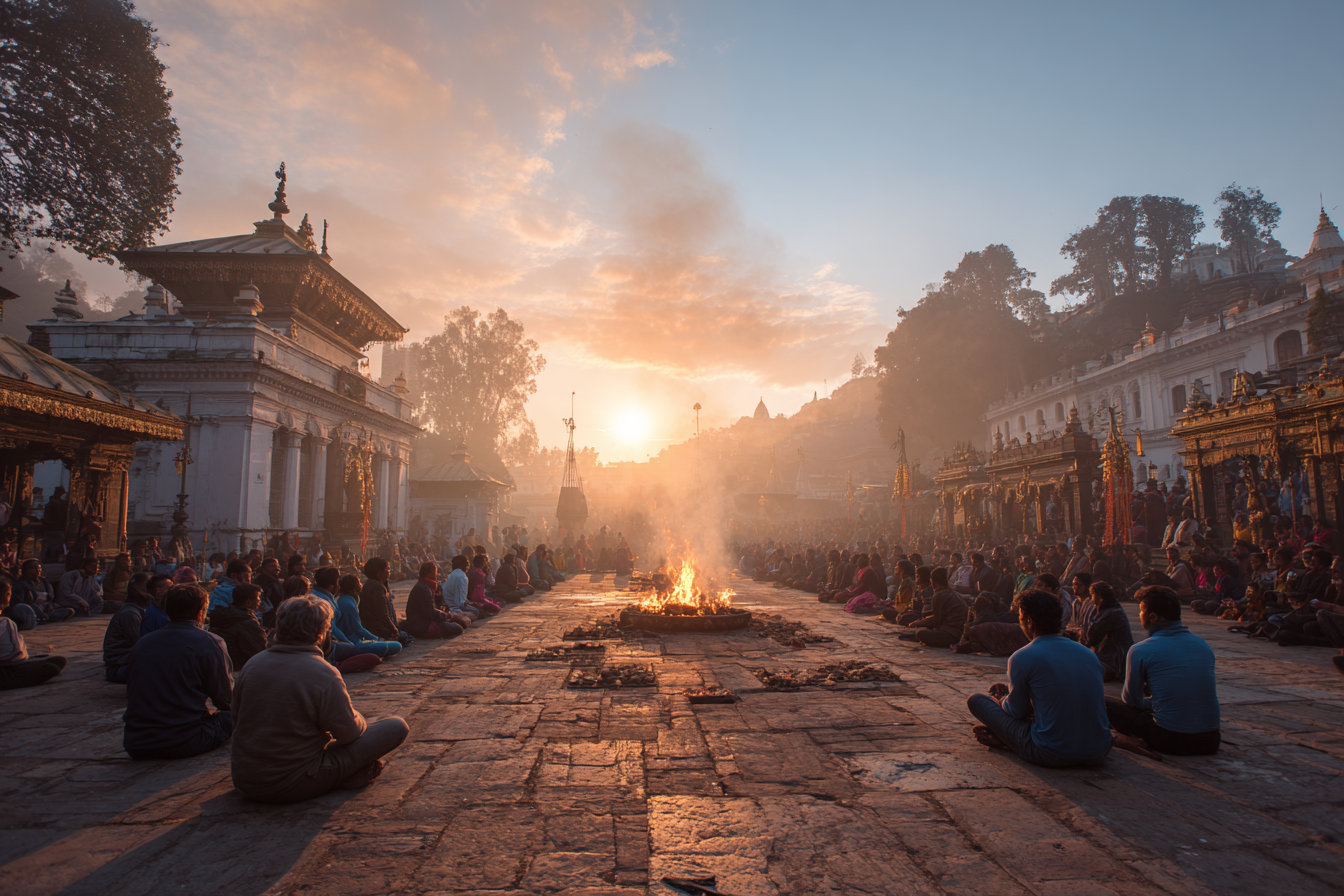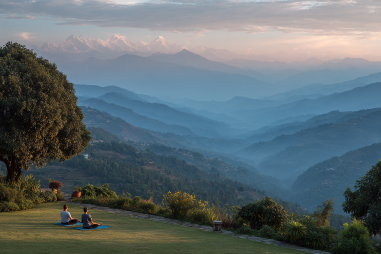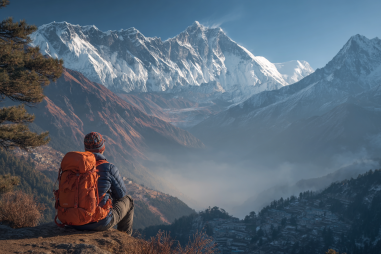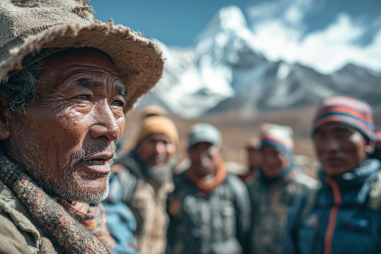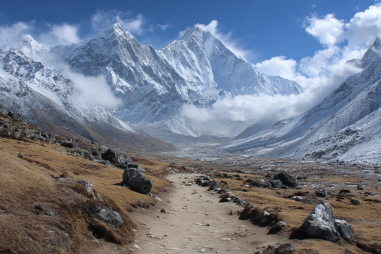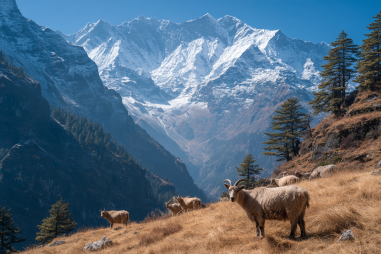Kathmandu, the bustling capital of Nepal, is a vibrant tapestry of culture, history, and spirituality. This city stands as a testament to the harmonious coexistence of diverse religious traditions, particularly Hinduism and Buddhism. For travelers and pilgrims alike, Kathmandu offers an immersive journey into Nepal’s spiritual heart through its magnificent temples, stupas, and monasteries. Each sacred site tells a unique story, reflecting centuries of religious devotion and architectural brilliance. Whether you are a seeker of peace, a lover of history, or simply curious, exploring Kathmandu’s religious sites reveals much about the soul of this enchanting city.
Kathmandu’s Rich Religious Diversity
Kathmandu is a melting pot of religious traditions, with Hinduism and Buddhism as the predominant faiths. Unlike many places where these religions exist separately, in Kathmandu, they blend together, influencing and inspiring each other. This intermingling is visible in the city’s architecture, rituals, and daily life. As you walk through the streets, you will find Hindu temples side by side with Buddhist stupas, and the air is filled with the chants and prayers of monks, priests, and worshippers. This spiritual diversity not only enriches the cultural fabric of Kathmandu but also invites visitors to experience multiple layers of religious expression in one place.
Pashupatinath Temple
One of Kathmandu’s most iconic religious landmarks is the Pashupatinath Temple, dedicated to Lord Shiva, one of Hinduism’s principal deities. This temple is one of the most sacred Hindu shrines in the world and attracts thousands of pilgrims annually. Situated on the banks of the Bagmati River, Pashupatinath’s intricate pagoda-style architecture, adorned with silver doors and golden roofs, makes it a breathtaking sight.
The temple complex is a spiritual hub where devotees gather to perform rituals, offer prayers, and participate in ceremonies including the cremation rites at the nearby ghats. Non-Hindus are not permitted inside the main temple sanctum, but they can explore the surrounding grounds, which offer glimpses of Nepal’s rich religious traditions. The atmosphere during the Maha Shivaratri festival, when thousands gather to honor Lord Shiva, is especially electric, offering a profound glimpse into Hindu devotion.
Swayambhunath Stupa
Often referred to as the “Monkey Temple” due to the many monkeys inhabiting the area, Swayambhunath Stupa is one of the oldest and most revered Buddhist sites in Kathmandu. Perched atop a hill, the stupa offers panoramic views of the city below, inviting both spiritual reflection and sightseeing.
The stupa’s glowing white dome and golden spire are adorned with the iconic Buddha eyes symbolizing wisdom and compassion. Circumambulating the stupa while spinning the prayer wheels is a common devotional practice here, creating a mesmerizing blend of movement, sound, and prayer. Swayambhunath is revered by both Buddhists and Hindus, underscoring Kathmandu’s unique religious harmony.
Boudhanath Stupa
Boudhanath Stupa is one of the largest spherical stupas in Nepal and a UNESCO World Heritage Site. This massive monument dominates the skyline and serves as a focal point for Tibetan Buddhism in Kathmandu. The stupa’s massive mandala and the eyes of Buddha painted on its four sides draw visitors from all over the world.
The area surrounding Boudhanath is lively with monasteries, shops selling prayer flags and Tibetan artifacts, and street cafés buzzing with pilgrims, monks, and tourists. The atmosphere is profoundly peaceful and spiritual, especially during Buddhist festivals like Losar (Tibetan New Year) when the stupa becomes the center of vibrant celebrations and rituals.
Buddhist Monasteries in Kathmandu
Around the stupas and throughout Kathmandu Valley, numerous Buddhist monasteries, or gompas, offer a deeper insight into the monastic lifestyle and Buddhist practices. These monasteries serve as centers of learning, prayer, and meditation. Many visitors can join guided tours or attend meditation sessions to better appreciate Buddhist teachings.
Popular monasteries such as Kopan Monastery and Thrangu Tashi Yangtse Monastery have become important pilgrimage sites as well as places attracting international visitors seeking spiritual growth. The monks here often welcome dialogue and invitations for participation in rituals, making these monasteries warm and accessible places for cultural exchange.
Hindu Temples and Shrines
Kathmandu is dotted with countless Hindu temples and smaller shrines dedicated to various deities beyond Pashupatinath. Temples such as Changu Narayan, dedicated to Lord Vishnu, and the Kumari Ghar, home to the living goddess Kumari, hold immense religious and cultural significance.
Many of these temples are architectural marvels made from intricately carved wood and stone and are embedded within the city’s daily life. Worshippers often visit these sites multiple times a week, participating in pujas (worship rituals) that involve offerings, chanting, and lighting lamps. These experiences offer visitors unique opportunities to witness authentic expressions of faith.
Religious Festivals and Rituals
Kathmandu’s religious calendar is vibrant with festivals and rituals that reveal the city’s spiritual vibrancy. During major Hindu festivals like Dashain and Tihar, the entire city transforms with colorful decorations, elaborate rituals, and communal celebrations. Similarly, Buddhist festivals such as Buddha Jayanti, marking the birth of Lord Buddha, fill the stupas and monasteries with devotees.
Events like the Indra Jatra festival seamlessly combine spiritual worship with cultural performances, showcasing dances, mask plays, and the display of sacred images. Participating or observing these festivals provides a deeper understanding of the beliefs, mythology, and social fabric surrounding Kathmandu’s religious life.
Visitor Etiquette and Dress Codes
Respecting local customs and religious practices is essential when visiting Kathmandu’s sacred sites. Visitors should dress modestly, covering shoulders and knees, to show respect within temples and stupas. Removing shoes before entering temple areas is a common practice. Photography rules should be observed carefully—while outdoor photography is often allowed, many temples restrict photography inside the sanctum or during certain rituals.
Maintaining silence or speaking softly, avoiding physical contact with religious artifacts, and following designated paths, especially around stupas, ensures a respectful atmosphere. Interacting with monks, priests, and locals with courteous gestures, such as the traditional namaste greeting, enhances the visitor experience and fosters mutual respect.
Embracing the Spiritual Journey in Kathmandu
Exploring Kathmandu’s religious sites offers more than a sightseeing opportunity; it’s an intimate journey into the spiritual and cultural heart of Nepal. From the sacred banks of Pashupatinath to the peaceful steps of Swayambhunath and the vibrant crowds around Boudhanath, each site invites contemplation and connection. Understanding the traditions, rituals, and histories behind these landmarks deepens appreciation and enriches your travel experience.
When visiting, plan to take your time, observe quietly, and engage with the local customs respectfully. Whether you’re seeking spiritual insight, historical knowledge, or simply a breathtaking cultural adventure, Kathmandu’s religious landscape welcomes you with open arms and timeless wisdom.

